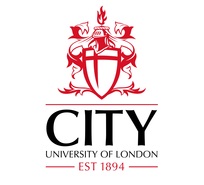
A study into the impact of chloride ions on the make-up hydrogen compressors.
Number: B3-161
Author(s) : FOULANDIVANDA M., HEIDARY M. A.
Summary
The presence of unwanted chemicals in process lines and downstream equipment causes defects and failures, which sometimes have significant impacts on systems and imposes extra costs for the production process. In this study, one pair of four-stage make-up hydrogen compressors is investigated. These reciprocating compressors which serve as a part of the hydrogen treating unit have failed approximately simultaneously. The feed of these compressors is net hydrogen-rich gas from the Pacol process. Both dry compressors have shown similar problems in the first and second stages. The simultaneous rise in the cylinder temperature and decrease in the flow has forced shut-down of the compressors for the next actions in the process. Initial inspections have revealed some kind of deposits covered the cylinder and its components. The valves, liquid tested and results have shown significant leakage of all the suction and discharge valves of the cylinders. Moreover, the thickness of all piston rings have decreased up to 50 percent which is more than allowable values. The compositions of deposits, tested by X-ray fluorescence (XRF) and X-ray diffraction (XRD), result from the analysis shown that it contains 35.2 percent (mass fractions) of Chlorine and 27.5 percent of Iron, and noticeable amount of Sulfur or Phosphor. XRD analysis has reported that the Iron Chloride Hydrate is the main part of the fouling sample. In this paper, the impact of the aforementioned chemicals on the compressor components are investigated, and some approaches are proposed to absorb or inhibit these chemicals.
Available documents
Format PDF
Pages: 10
Available
Free
Details
- Original title: A study into the impact of chloride ions on the make-up hydrogen compressors.
- Record ID : 30028759
- Languages: English
- Subject: Technology
- Source: 12th International Conference on Compressors and their Systems
- Publication date: 2021/09
- Document available for consultation in the library of the IIR headquarters only.
Links
See other articles from the proceedings (63)
See the conference proceedings
Indexing
-
Health management system for compressors in hyd...
- Author(s) : LI X., PENG X., CHEN D., JIA X.
- Date : 2022/07/15
- Languages : English
- Source: 2022 Purdue Conferences. 26th International Compressor Engineering Conference at Purdue.
- Formats : PDF
View record
-
Pressure pulsation in the reciprocating compres...
- Author(s) : YANG L., WANG W., JIA X., et al.
- Date : 2018/07/09
- Languages : English
- Source: 2018 Purdue Conferences. 24th International Compressor Engineering Conference at Purdue.
- Formats : PDF
View record
-
Oil transport mechanisms inside semi-hermetic r...
- Author(s) : MANNEWITZ J., LANGEBACH R., HESSE U.
- Date : 2018/07/09
- Languages : English
- Source: 2018 Purdue Conferences. 24th International Compressor Engineering Conference at Purdue.
- Formats : PDF
View record
-
Numerical-experimental investigation of liquid ...
- Author(s) : BIANCHI M., DESCHAMPS C. J., RODRIGUES T. T., PALADINO E. E.
- Date : 2021/09
- Languages : English
- Source: 12th International Conference on Compressors and their Systems
- Formats : PDF
View record
-
Experimental investigation of liquid slugging i...
- Author(s) : BALCONI T. B., RODRIGUEZ T. T., DESCHAMPS C. J.
- Date : 2022/07/15
- Languages : English
- Source: 2022 Purdue Conferences. 26th International Compressor Engineering Conference at Purdue.
- Formats : PDF
View record
